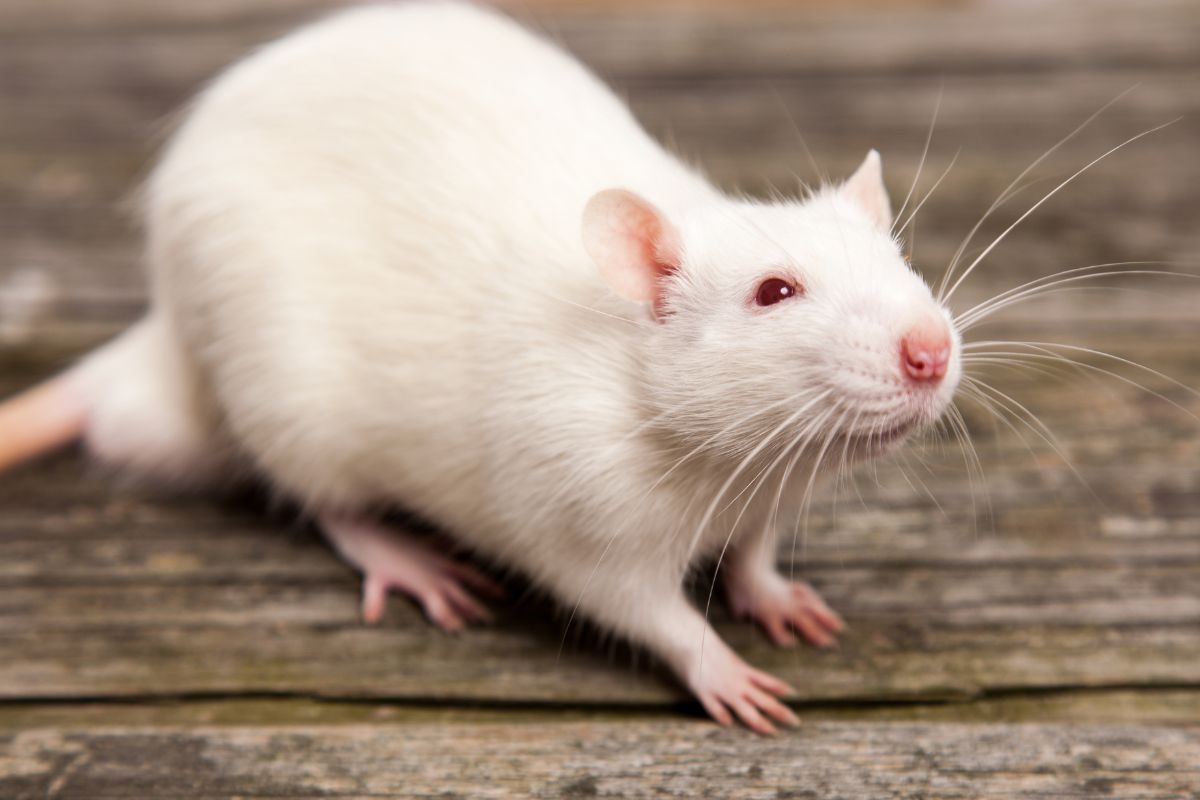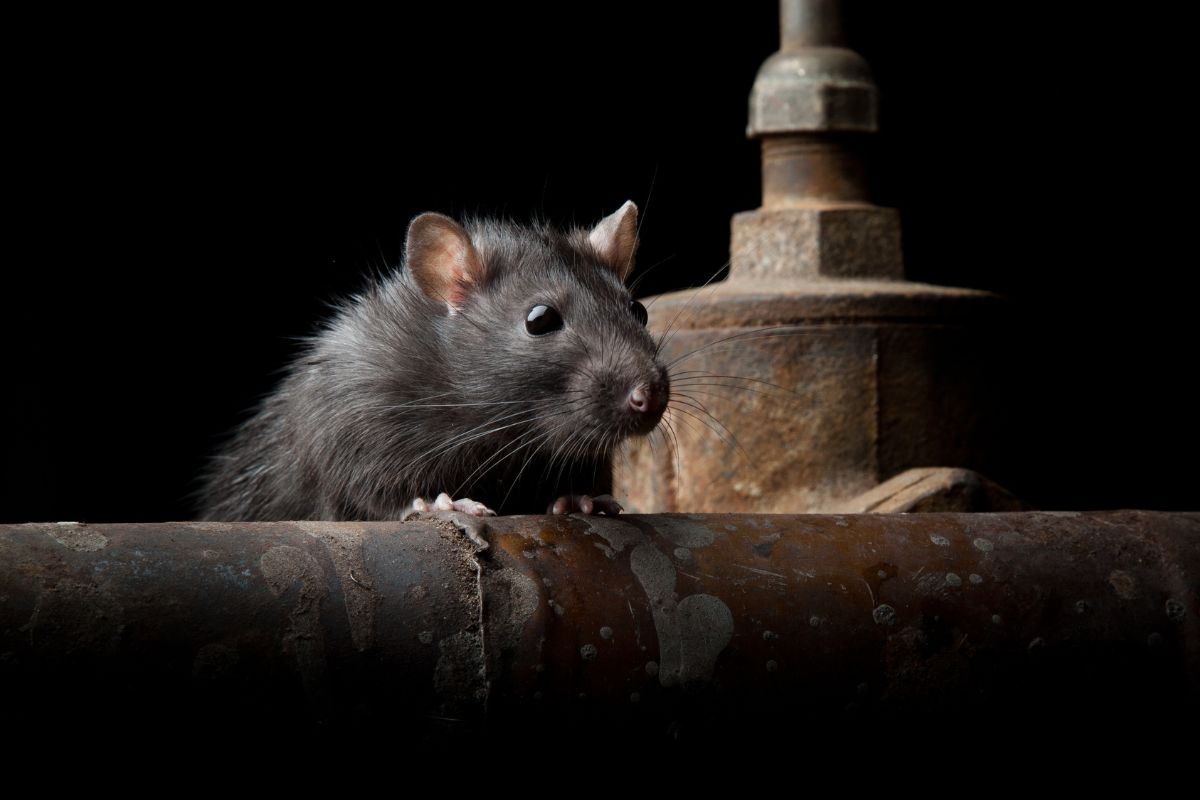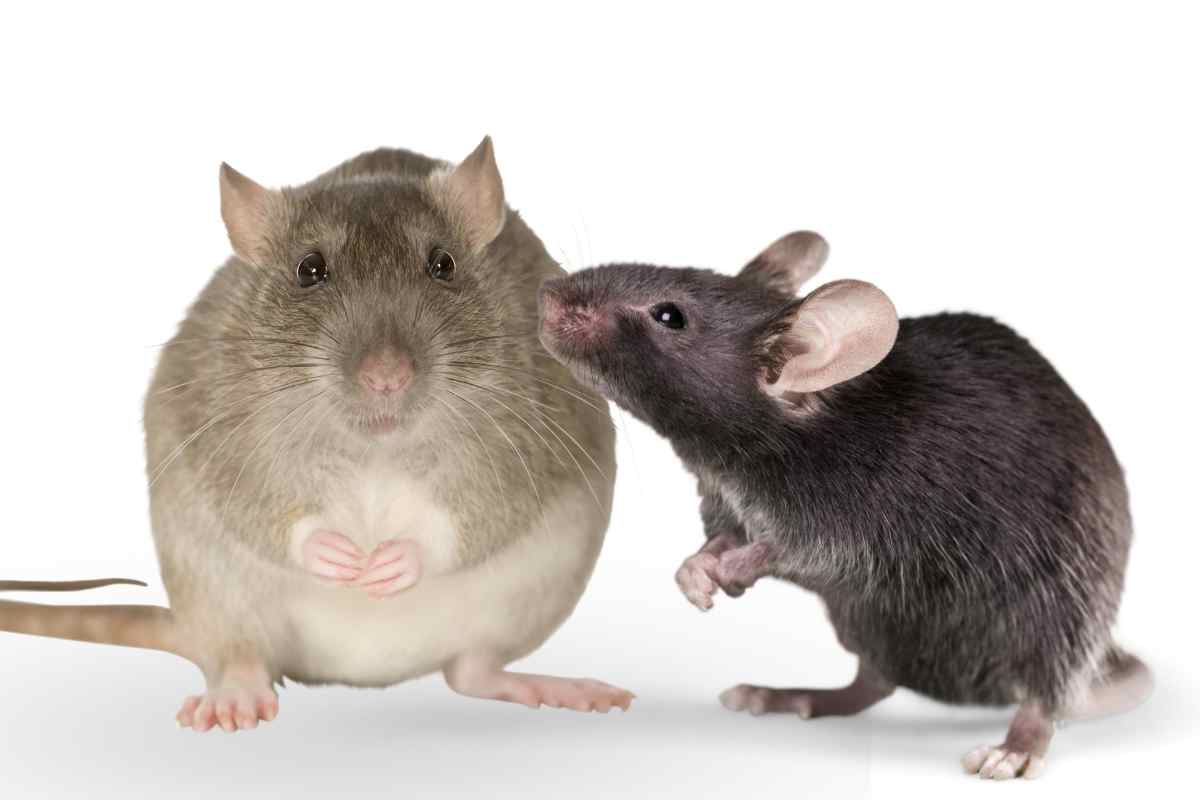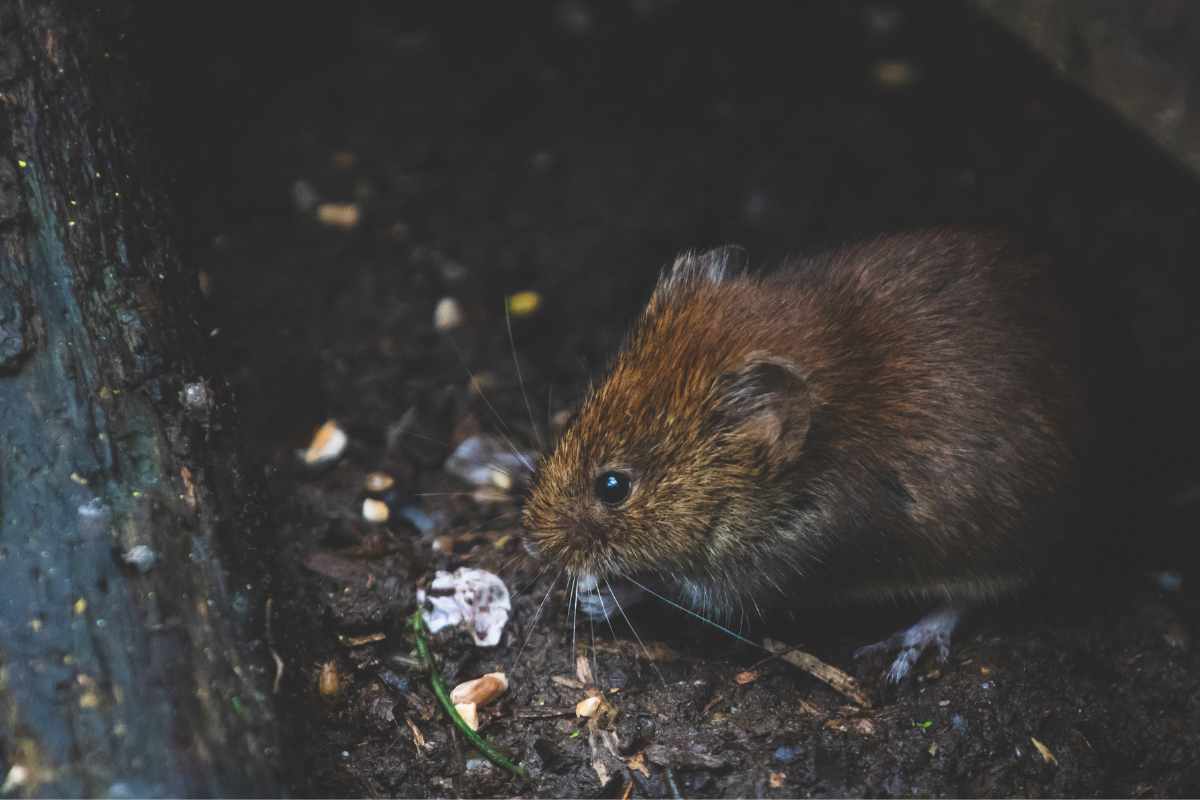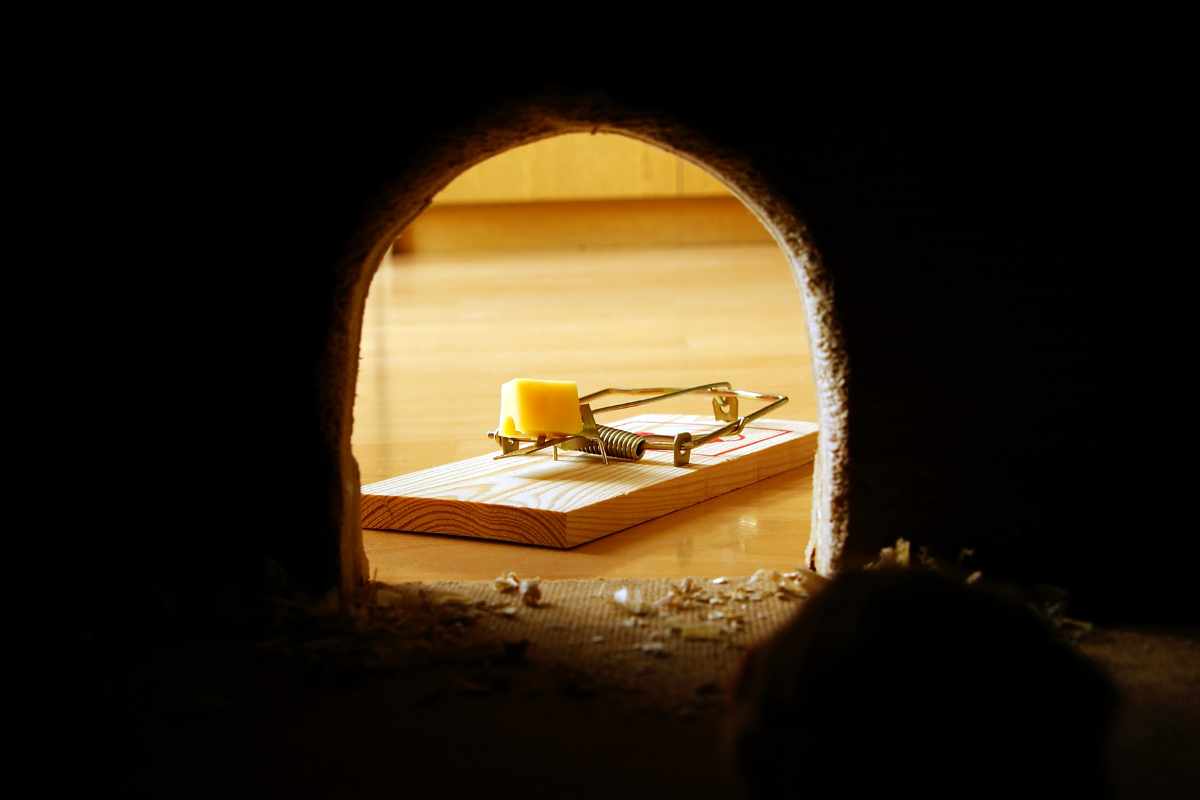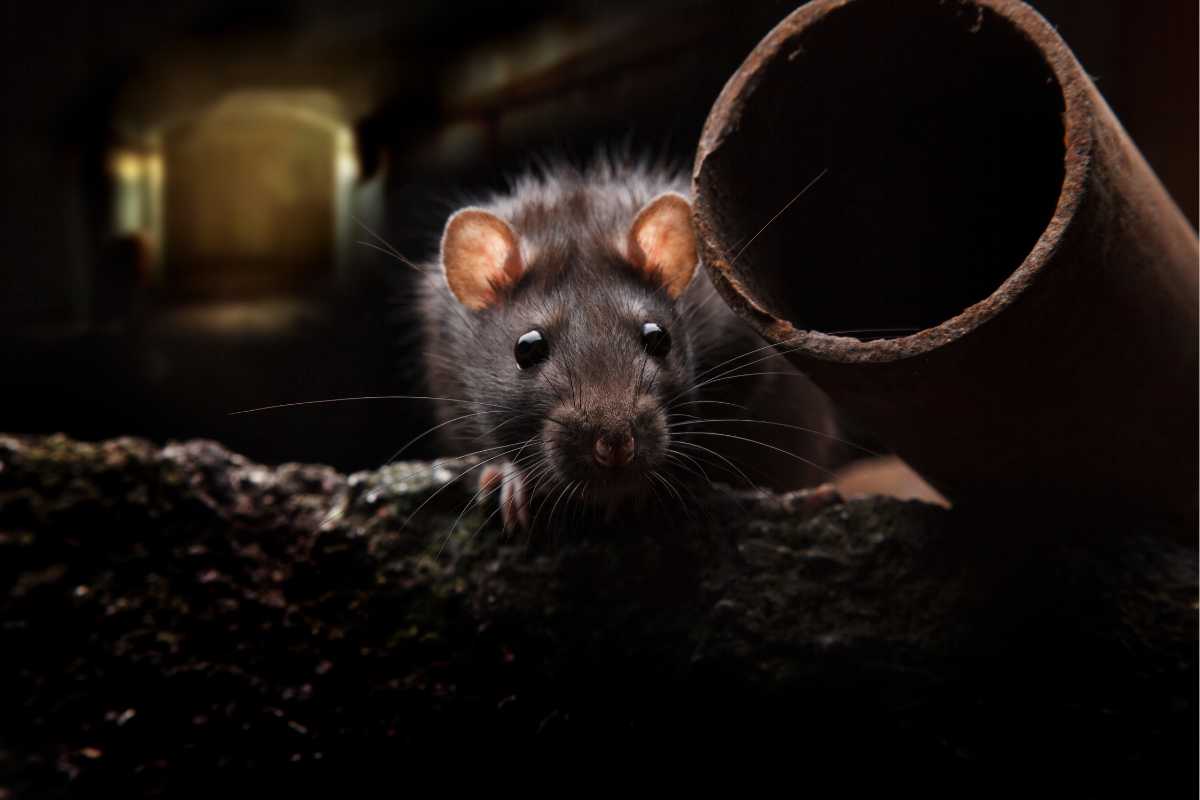The Role of Weather in Rat Infestations During the Winter Months
Winter, with its frosty mornings and biting winds, casts a spell of transformation across the landscape. As the world dons its icy cloak, it ushers in a unique set of challenges and adaptations for both humans and creatures alike. Among the less celebrated winter inhabitants are stealthy and resourceful rats that, like clockwork, seek shelter and sustenance during the season's chill.
While rat infestations are a concern year-round, the winter months often witness a surge in these unwelcome guests. To comprehend why winter is a favored season for rats and how the weather plays a pivotal role in rat infestations, we embark on a journey into the frosty realms of rodent behavior and the conditions that draw them closer to our homes and businesses.
1. Seeking Shelter from the Cold
One of the primary reasons rats become more prevalent in winter is their quest for shelter from the cold. As temperatures drop, rats seek warmth and protection from the elements, and they often find it in our homes, businesses, and other structures. Rats can squeeze through surprisingly small openings, making it relatively easy to find their way indoors.
2. Limited Food Sources
Winter also limits the availability of food sources for rats. With fewer outdoor options, they are more likely to venture into buildings for sustenance. Rats are opportunistic feeders, and they can subsist on a wide range of food scraps, making homes and businesses attractive targets during the season of scarcity.
3. Breeding Patterns
Rats are known for their prolific breeding capabilities. While they can reproduce throughout the year, their breeding often peaks during the warmer months. However, these winter infestations can involve pregnant females seeking a cozy nesting site to give birth to their litters, potentially leading to larger populations.
4. Hiding in Plain Sight
Rats are nocturnal creatures, which means they tend to be more active at night. The longer nights of winter give them extended periods of darkness to forage for food and explore their newfound indoor habitats without being detected.
5. Prevention Is Key
Adopting proactive measures is paramount When safeguarding your home or business against the unwelcome presence of rats during the winter months. Rats are resourceful creatures that can exploit vulnerabilities, so creating an inhospitable environment for them is essential. Let's delve deeper into these preventive strategies to ensure you're well-prepared for the winter rat challenge:
Seal Entry Points: Fortify Your Defenses
The first line of defense against rats is to seal off potential entry points. Rats can infiltrate your premises through cracks, gaps, and openings around pipes and vents. Begin by thoroughly inspecting your property, paying meticulous attention to these vulnerable areas. Seal any openings you discover with appropriate materials, such as caulk, weatherstripping, or wire mesh. By denying rats easy access, you make it significantly more challenging for them to infiltrate your space.
Maintain Cleanliness: Eliminating Temptation
Rats are attracted to food sources, and winter's limited outdoor options intensify their quest for sustenance. A clean environment is your ally in deterring them. Ensure your premises remain pristine by adopting the following practices:
- Airtight Food Storage: Store food items in airtight containers, denying rats access to their preferred dining options. This simple step can make a significant difference in preventing infestations.
- Prompt Spill Cleanup: Accidental spills are inevitable, but swift action is crucial. Clean up spills immediately to eliminate potential food sources for hungry rodents.
- Secure Trash Bins: Rats are notorious for rummaging through trash bins. Keep yours securely sealed to prevent them from feasting on discarded leftovers.
By maintaining cleanliness and reducing available food sources, you create an environment that is far less appealing to rats.
Regular Inspections: Early Detection Is Key
Vigilance is your ally in the battle against rats. Periodically inspect your property for any signs of rat activity. Look for telltale indicators like rat droppings, gnaw marks, or chewed wires. Early detection allows you to address potential infestations before they escalate into larger problems. Act promptly if you notice any signs of rats, as swift intervention can prevent an infestation from taking hold.
Professional Pest Control: The Expert's Touch
In some cases, despite your best efforts, rats may prove persistent. When faced with a rat problem that seems impossible, consider enlisting the services of a professional pest control company. These experts have the knowledge, tools, and experience to eradicate existing infestations and implement preventive measures to safeguard your property.
Landscaping Maintenance: Trim for Safety
Rats are adept climbers who can use overhanging branches and shrubs to access your building. To mitigate this risk, regularly trim and maintain your landscaping. Keeping vegetation away from your structure makes it less convenient for rats to find their way indoors.
Education and Awareness: The Whole Team's Responsibility
Finally, ensure that everyone in your household or workplace is educated about the signs of rat infestations and the importance of taking swift action. Encourage a culture of awareness and responsibility when it comes to rat prevention. Prompt reporting of any suspected rat activity can be crucial in addressing issues before they spiral out of control.
Key Takeaways
While winter may allow rats to seek refuge from the cold, it doesn't mean you have to share your space with these unwanted guests. Understanding the factors that make winter conducive to rat infestations and taking proactive measures can create a rat-resistant environment for your home or business.
Prevention is key, and early intervention is crucial if you suspect a rat problem. With the right strategies in place, you can ensure that your winter remains rat-free and cozy.
Rats in the City: Tackling Urban Rat Infestations Effectively
Navigating through the bustling life of a city, residents are often met with unforeseen challenges—one of which is the uninvited infestation of rats. Urban rat infestations are a nuisance and a significant public health concern, as they can transmit diseases, cause property damage, and contribute to the deterioration of living conditions.
Addressing and managing this pervasive issue requires a meticulous, sustained, and multi-faceted approach.
Understanding Urban Rat Infestations
Rat infestations in cities are primarily fueled by the availability of food, water, and shelter, which urban settings inadvertently provide in abundance. The consequences are multifaceted, affecting public health, damaging properties, and negatively impacting urban living standards and aesthetics.
Understanding the biology and behavior of rats is vital to devising effective control strategies. Rats are adept survivors, capable of navigating complex urban landscapes and exploiting available resources for sustenance and nesting.
Implementing Effective Rat Control Measures
Effectively combating rat infestations in urban settings necessitates a well-structured and multi-faceted approach, employing strategies that address the immediate issue of existing rat populations and preventive measures to hinder re-infestation. Below, we delve into key aspects of a comprehensive rat control strategy.
Embracing Integrated Pest Management (IPM)
Integrated Pest Management (IPM) amalgamates various strategies, including biological, physical, and chemical methods, to effectively manage rat populations. It prioritizes environmentally friendly and sustainable practices, minimizing chemical interventions and focusing on long-term solutions by addressing the root causes of infestations.
Engaging Expert Pest Controllers
Utilizing the expertise of professional pest controllers is pivotal. Experts bring a wealth of knowledge regarding rat behavior, along with specialized tools and methodologies that ensure infestations are dealt with thoroughly, safely, and in compliance with local regulations.
Employing Preventive Strategies
Prevention is paramount in rat control. This involves identifying and sealing potential entry points, securing food sources, and employing physical barriers and deterrents that hinder rat activities, averting potential infestations before they manifest.
Leveraging Technology in Rat Control
Technological advancements offer innovative solutions for rat control, such as remote monitoring systems, intelligent trapping devices, and data analytics to predict and respond to potential infestations effectively. Employing technology enables more precise, efficient, and humane control strategies.
Ensuring Safety and Minimizing Disruption
Implementing rat control measures should prioritize the safety of residents and minimize disruption to everyday life. This involves carefully planning interventions, utilizing safe and non-disruptive methods, and effectively communicating with the community to ensure preparedness and cooperation.
Incorporating these aspects into a coherent rat control strategy ensures a thorough, sustainable, and community-friendly approach to managing urban rat infestations, safeguarding city dwellers' health, safety, and quality of life.
Urban Planning and Design Considerations
Urban planning and design play a crucial role in mitigating rat infestations. By incorporating rat-resistant features in building and infrastructure design, the availability of shelter and food sources for rats can be significantly reduced.
Improving sanitation and waste management practices across the city is also pivotal in depriving rats of vital resources, naturally curbing their population, and mitigating infestation issues.
Community Involvement and Public Education
An intertwining of community participation, public education, and robust networks lays down a foundational framework that propels and sustains rat control initiatives, ensuring they are inclusive, well-coordinated, and supported by the populace they seek to safeguard.
Fostering a Collective Effort
Community involvement is a linchpin in effectuating comprehensive and enduring solutions to rat infestations in urban environments. Encouraging a collective effort means mobilizing neighborhood communities to adopt preventive measures, report sightings, and cooperate during control interventions.
The synergy of community actions, such as organizing clean-up drives, adhering to sanitation guidelines, and supporting local authorities during control operations, significantly bolsters the efficacy and sustainability of rat control measures.
Nurturing an Informed Public
The role of public education in mitigating rat infestations is crucial and multifaceted. Ensuring the public is well-informed about the risks and repercussions of rat infestations, preventive measures, and timely reporting, arms the community with the knowledge to deter infestations effectively.
Educational campaigns, workshops, and informational materials should be accessible, comprehensible, and tailored to various demographic segments, facilitating a well-informed populace proactively engaging in and supporting rat control initiatives.
Establishing Community Networks
Forming and strengthening community networks—such as local committees, online groups, and neighborhood watch teams—facilitates efficient communication and coordinated actions amidst rat control operations. These networks act as conduits for disseminating information, organizing community initiatives, and providing a platform for residents to share experiences, insights, and feedback.
Robust community networks thus not only enhance the flow of information and coordination but also foster a sense of solidarity and collective responsibility in tackling rat infestations in the urban milieu.
Legal and Ethical Aspects of Rat Control
Understanding and adhering to local and international regulations on pest control is crucial to ensure that rat management practices comply with legal standards and ethical considerations.
Employing humane rat control methods that prioritize the welfare of animals while effectively managing infestations ensures that ethical standards are upheld in pest management practices.
Key Takeaways
Tackling rat infestations in urban environments requires a balanced, informed, and collaborative approach that intertwines effective pest management, strategic urban planning, community involvement, and ethical and legal standards. By embracing a holistic strategy, cities can significantly mitigate rat infestations, fostering a cleaner, safer, and more pleasant urban living experience for all residents.
Note: Adjustments can be made to cater to specific details, regulations, and circumstances of different urban environments. Always consult local experts and adhere to regional laws and guidelines when addressing pest control issues.
Seasonal Trends: When Are Rats Most Active?
Gaining insights into the seasonal activity of rats is not just a matter of curiosity but often a necessity, especially if you're a homeowner or a business proprietor keen on safeguarding your property.
While rats have garnered a reputation for their uncanny ability to thrive in diverse conditions, their activity levels do exhibit fluctuations throughout the year. It's crucial to recognize these patterns to effectively manage potential infestations and mitigate damage caused by these persistent rodents.
In this comprehensive blog post, we aim to equip you with the detailed understanding you need about rat behavior and activity patterns across various seasons. From understanding the core factors that drive rat activity to actionable tips for controlling their presence, this guide seeks to be your one-stop resource on this pressing issue.
Introduction to Rat Behavior
Before diving into the seasonal trends that govern rat activity, it's crucial to lay the groundwork by understanding some fundamental aspects of rat behavior. These resourceful rodents are driven by a few essential needs that often push them into human habitats, making them not just a nuisance but sometimes a considerable threat.
Knowing what motivates rats can provide valuable insights into predicting when and where they are most likely to show up, thereby helping you take proactive measures to control their presence.
In the following sub-sections, we will discuss the primary drivers of rat activity and how their daily and seasonal routines may vary, affecting both homeowners and businesses alike. Armed with this foundational knowledge, you will be better equipped to understand the nuances of rat activity throughout the year.
What Drives Rat Activity?
Rats are motivated by a few basic yet essential needs: the quest for food, water, and a safe shelter. These primal necessities significantly dictate the ebbs and flows in their daily and seasonal activity levels. An abundance or lack of these resources, coupled with the climatic conditions, triggers specific behaviors in rats that we should all be aware of to protect our living and working spaces effectively.
Daily and Seasonal Patterns
While it's commonly understood that rats are nocturnal creatures, this barely scratches the surface of their complex activity patterns, which are influenced by a myriad of factors including daily cycles, seasonal changes, and environmental conditions. These patterns aren't merely whimsical behaviors but are often survival tactics that have evolved over centuries, enabling rats to successfully co-exist, and often thrive, in environments that are also inhabited by humans.
During the course of a single day, rats tend to be most active during nighttime hours, avoiding the daylight to escape predators and human activity. The cover of darkness provides them with the opportunity to search for food, mate, and explore their environment with a lower risk of being detected. This nocturnal lifestyle is consistent throughout the year; however, the specific timing and duration of their nightly outings can vary depending on other variables like weather and availability of food.
Seasonality adds another layer of complexity to rat behavior. Each season presents its own set of challenges and opportunities for these creatures. For instance, spring often marks a period of increased activity as temperatures rise and food becomes more abundant, sparking a higher rate of mating and exploration.
On the flip side, winter months may not necessarily signify reduced activity but rather a shift in focus towards seeking warmth and shelter, often within human dwellings, to survive the harsh conditions. During the fall, the approaching cold weather propels them to prepare for the winter by hoarding food and scouting for warmer habitats. Summer offers its own dynamics, with warmer weather making it easier for rats to thrive, but also potentially exposing them to more risks as humans are also more active outdoors.
When Are Rats Most Active?
Spring Awakening
During spring, as temperatures begin to rise, rats become increasingly active. This season marks the beginning of their mating period, making it a crucial time for homeowners and business owners to be vigilant about potential infestations.
Summer Activity
The summer season usually sees a peak in rat activity. The warm temperatures and abundant food resources allow rats to thrive. This is when they are often seen venturing out more frequently in search of food.
Fall Preparations
As the temperatures begin to drop in the fall, rats start preparing for winter. This often involves seeking out warmer habitats and storing food, making them highly active during this season as well.
Winter Survival
During winter, rat activity may seem to decrease, but that's often because they have already found shelter and are less visible. In reality, they are still active within their chosen habitats, especially if those habitats are warm and provide access to food.
Tips for Managing Rat Activity
If understanding rat behavior and their activity cycles is the first step towards effective management, then implementing a set of well-thought-out strategies is undoubtedly the next logical step. Managing rat activity isn't simply a matter of laying down some traps and hoping for the best; it requires a multi-faceted approach that considers not just immediate deterrence but also long-term prevention.
Below, we delve into a variety of tactics that can help you tackle this issue in a robust manner, while accounting for the unique challenges posed by rats' daily and seasonal activity cycles.
Sanitation and Food Storage
A clean environment is less likely to attract rats. It's not just about keeping food crumbs off the floor but extends to proper waste management, secure food storage, and even maintaining your outdoor areas free from debris that can act as a potential food source or nesting site for rats.
Regular Property Inspections
Conduct frequent inspections of your property to identify any potential entry points, such as cracks, holes, or gaps in the foundation, walls, or roof. Seal these immediately to prevent rats from entering your premises, particularly during seasons when they are seeking shelter.
Use of Traps and Baits
Trapping remains one of the most effective methods of rat control, but its success depends on choosing the appropriate types of traps and placing them strategically based on rats' activity patterns. Baits can be useful, but caution should be exercised to place them in locations inaccessible to pets or children.
Consult Professional Services
Sometimes, despite best efforts, rats can prove to be a persistent problem that is beyond DIY solutions. In such cases, it may be beneficial to consult professional pest control services that can offer more effective, long-term solutions based on expert knowledge of rat behavior and habits.
Leveraging Technology
Today, various technological solutions such as motion-activated cameras and sensors can help monitor rat activity. These tools can provide real-time data, allowing for timely intervention and providing a clearer understanding of where and when rats are most active.
Seasonal Preparations
Given the seasonal variations in rat activity, it is wise to prepare in advance for periods when rats are more likely to venture into human habitats. This could mean setting up more traps before the onset of winter or reinforcing the sealing of potential entry points ahead of spring.
Educate and Involve the Community
Rat management isn't just an individual endeavor; it can be much more effective when the community is involved. Share insights about rat behavior and effective control measures with your neighbors to foster a more coordinated effort in tackling the problem.
Key Takeaways
Rat activity is influenced by various factors, including seasonal changes. Being aware of their activity patterns can help in taking effective preventative measures. Spring and summer are particularly active seasons for rats, but fall and winter come with their own set of challenges. The best way to manage rat activity is to remain vigilant year-round, keep your surroundings clean, and seek professional help when necessary.
By understanding when rats are most active, you can better prepare and protect your property or business. Remember, proactive measures are always more effective than reactive ones.
Mice vs. Rats: Spotting the Difference and Why It Matters for Extermination
When it comes to unwanted guests in your home or business, mice and rats top the list. Both are notorious for causing structural damage, contaminating food supplies, and posing potential health risks. However, despite their similarities, mice and rats are distinct species, each with its own set of behaviors, habitats, and challenges regarding extermination. Failing to identify which rodent you're dealing with accurately can lead to ineffective pest control measures, wasting both time and money.
Why does the distinction matter? Because the strategies for dealing with these two types of rodents can differ significantly. For example, mice are curious creatures that may be easier to trap, whereas rats are more cautious and may require different baiting strategies. The differences also extend to their breeding cycles, food preferences, and the extent of damage they can cause, which directly impacts how you should approach eradication.
In this article, we will delve into the key differences between mice and rats and explore why these differences are critical when it comes to effective extermination. Whether you're a homeowner keen on protecting your investment or a business owner aiming to maintain a clean and safe environment, understanding these nuances can equip you with the knowledge you need for effective pest control.
Identifying Mice: Characteristics and Behavior
House Mouse is the most frequently encountered type in domestic and commercial settings. Recognizing a mouse involves understanding its physical attributes and behavior.
Physical Traits of Mice
Mice are swift creatures and observing them closely may be difficult. However, certain distinguishing features can help identify them:
- Enormous, floppy ears: Mice have disproportionately large ears.
- Long, thin, hairy tails: Their tails are covered with short hairs.
- Small bodies: These rodents are typically one to four inches long.
Mice possess sharp, triangular snouts and small heads. Their fur can vary from brown and grey to white.
Behavioral Traits of Mice
Mice are adept at chewing and climbing through a variety of materials, which can result in significant damage to your property. They tend to build nests in quiet, secluded spaces and forage for food. Mice primarily consume water through their food but will drink if it's available.
An important sign of a mouse infestation is the presence of droppings, which are usually clustered near nests and food sources. These rodents are nocturnal and prefer to avoid brightly lit areas.
Mice breed prolifically, with a female mouse capable of giving birth to up to 140 offspring in a year. Inside a dwelling, a mouse can live up to three years.
Identifying Rats: Characteristics and Behavior
Common types of rats include the brown rat (also known as the Norway rat) and the black rat (also known as the ship or roof rat). Similar to mice, rats can cause considerable damage and spread diseases.
Physical Traits of Rats
Rats are usually found at ground level, such as in basements and crawlspaces, but can climb. Distinguishing features of rats include:
- Small ears: Rat ears are relatively smaller, especially compared to mice's.
- Long, scaly tails: Their tails are usually flesh-toned.
- Large bodies: Rats can grow to almost 16 inches in length.
Rats have stubby, square-shaped snouts. Their fur is typically brown with black interspersed and a lighter underside.
Behavioral Traits of Rats
Rats can chew through various materials, including walls, wires, cinder blocks, glass, and aluminum. The Norway rat, common in many regions, prefers to burrow but will occasionally infest buildings.
Rats have shorter lifespans than mice, with the average brown rat living for about a year. A brown rat can produce up to 12 offspring per litter, with an average of five litters in its lifetime. Rats can reproduce throughout the year.
Rats require about two ounces of water and up to an ounce of food or more per day. They leave between 20-50 droppings daily, which are significantly larger than mice droppings.
Damage and Risks Associated with Rodents
Both mice and rats can cause substantial damage and pose significant health risks to humans and pets.
Damage Caused by Mice
Mice can cause considerable damage despite their small size. They can enter homes through tiny holes or drainage systems. Once inside, they can tear through walls and ceilings, contaminate stored food, and damage electrical wires, creating fire hazards.
Mice can also pose serious health risks, as their droppings can carry pathogens that cause diseases such as listeria, salmonella, and hantavirus.
Damage Caused by Rats
Rats are larger and can chew through a variety of materials to gain access to buildings. They can cause extensive damage to stored food, wood structures, and even glass or vinyl. Rats can also transmit serious diseases through bites, contact with droppings, or fleas they carry. These diseases, including hantavirus, Rat Bite Fever, and plague, can lead to severe health complications.
Challenges in Pest Control: Mice vs. Rats
Mice and rats have distinct diets, traits, and behaviors, presenting unique pest control challenges. A rat exterminator must understand these differences to implement successful control measures.
Identifying nesting areas, feeding routes, and entryways is crucial to managing a rodent infestation. Rats tend to be cautious and fearful, while mice are curious and bold, affecting their responses to traps and baits.
If the rodent populations are not fully controlled, they can quickly repopulate. Therefore, a comprehensive pest control solution is necessary, which includes controlling the existing population and preventing new rodents from entering.
All rodent entry points must be identified and sealed with robust materials. For rat control, these materials need to be even stronger. Galvanized steel and cement are common choices to exclude rats, while other materials may suffice for mice.
Seek Professional Help for Rodent Control
If you are dealing with a rodent infestation, professional help is available. Certified pest technicians can provide comprehensive pest control solutions that eliminate the existing population and prevent future infestations.
What to Do if You Have Rodents in Your Home
If you suspect a rodent infestation, seek professional help immediately. A skilled rat exterminator can assess the situation, identify the type of rodent, and implement the most effective control measures.
Key Takeaways
While mice and rats may share some general characteristics, understanding their distinct behaviors, habits, and preferences is crucial for effective extermination. Each requires a tailored approach for trapping, baiting, and ultimately eliminating them from your property. By identifying these rodents accurately, you can implement a more targeted pest control strategy, saving you time, effort, and financial resources.
Effective pest control is not just about removing the current infestation but also about preventing future invasions. Knowing whether you're dealing with mice or rats can guide you in sealing entry points, selecting the right baits, and understanding the extent of the problem, including potential damage and health risks.
Rat Traps vs. Poisons: The Pros and Cons
Dealing with a rat infestation can be a challenging and pressing issue. When confronted with this problem, it is important to understand the available methods of rat control. Two common approaches are rat traps and poisons. Rat traps rely on mechanical means to capture or eliminate rats, while poisons are chemical substances designed to eradicate rats when ingested.
This article aims to provide a comprehensive analysis of rat traps and poisons, comparing their effectiveness, safety considerations, ease of use, and potential drawbacks. By examining the advantages and limitations of each method, readers can make an informed decision regarding the most suitable approach for their specific rat control needs.
Rat Traps: The Pros and Cons
Rat traps have been a popular and reliable method for addressing rat infestations for decades. With various types and designs available, rat traps offer a targeted approach to controlling rats.
However, like any method, there are pros and cons to consider. In this section, we will explore the advantages and disadvantages of rat traps, highlighting their effectiveness, safety, reusability, and cost-effectiveness, as well as considering the need for human intervention and the learning curve associated with their use.
Pros of Rat Traps
Rat traps have long been relied upon as an effective method for controlling rat infestations. These devices come in various types and designs, each with its own advantages.
- Safety: Rat traps are considered a safer option compared to poisons, as they do not involve the use of toxic substances that could harm children, pets, or non-targeted wildlife. They provide a more targeted approach, ensuring that only rats are affected.
- Immediate Results: Rat traps offer the advantage of instant results. When a rat triggers the trap, it can be captured or killed on the spot, providing immediate relief from the infestation. This quick response can help prevent further damage and minimize the rat population.
- Reusability: Many rat traps are reusable, allowing you to reset and deploy them multiple times. This makes them a cost-effective choice in the long run, as you don't need to continuously purchase new traps.
Cons of Rat Traps
While rat traps are a popular method for controlling rat infestations, it's important to be aware of their limitations and potential drawbacks. Rat traps, though effective in many cases, come with a set of considerations that should be taken into account.
- Human Intervention: Rat traps require human intervention for setup, monitoring, and disposal of trapped rats. Handling dead rats can be unpleasant and potentially pose health risks if proper precautions are not taken.
- Learning Curve: Using rat traps effectively may require some knowledge and experience. Different trap types and placements may work better in specific situations, and understanding rat behavior can enhance trapping success.
- Limited Coverage: Rat traps are typically designed to catch or kill individual rats. They may not be as effective in addressing larger infestations, as rats can reproduce quickly. Multiple traps may be needed to cover a significant infestation area.
Rat Poisons: The Pros and Cons
When dealing with a rat infestation, rat poisons, also known as rodenticides, are often considered as a potential solution. These chemical substances are designed to eliminate rats by ingestion. However, the use of rat poisons comes with a set of advantages and disadvantages that need to be carefully evaluated. In this section, we will explore the pros and cons of rat poisons, highlighting their wide coverage, minimal human intervention required, accessibility, as well as safety concerns, slow effects, and the risk of secondary poisoning.
Understanding the benefits and drawbacks of rat poisons will help you make an informed decision when considering this method for rat control, taking into account the specific circumstances and safety considerations associated with your situation.
Pros of Rat Poisons
Rat poisons, also known as rodenticides, are chemical substances designed to eliminate rat infestations by ingestion. While rat poisons come with their own set of considerations and risks, they offer several advantages that make them a popular choice for rat control in certain situations.
- Wide Coverage: Rat poisons can cover a larger area compared to traps. Rats that consume the poison can spread it to other members of the colony, potentially addressing a more extensive infestation.
- Minimal Human Intervention: Unlike rat traps, which require continuous monitoring and disposal of trapped rats, rat poisons are a more hands-off approach. Once the poison is placed, it can work over time without constant human involvement.
- Accessibility: Rat poisons are readily available in various forms, such as pellets, blocks, or baits. They are often easy to use and require minimal setup.
Cons of Rat Poisons
While rat poisons can be effective in controlling rat infestations, it's important to consider their drawbacks and potential risks. The use of rat poisons, also known as rodenticides, comes with several concerns that must be taken into account.
- Safety Concerns: Rat poisons pose risks to children, pets, and non-targeted animals. Accidental ingestion can lead to severe health issues or even fatalities. Proper precautions must be taken to prevent unintended exposure.
- Slow Effects: Unlike rat traps, which offer immediate results, rat poisons can take time to eliminate rats. Rats may not consume a lethal dose immediately, and multiple feedings might be required, prolonging the control process.
- Potential Secondary Poisoning: The use of rat poisons can lead to secondary poisoning if non-targeted animals consume poisoned rats. This can have detrimental effects on wildlife, pets, and ecosystem balance.
Key Takeaways
When dealing with a rat infestation, it is important to carefully consider the pros and cons of rat traps and poisons. Rat traps offer safety, immediate results, reusability, and customization, while rat poisons provide wider coverage and require minimal human intervention. The choice between the two methods depends on factors such as the severity of the infestation and personal preferences.
Remember to follow safety guidelines and seek professional advice if needed. Implementing preventive measures is essential for long-term rat prevention. By making an informed decision and taking appropriate actions, you can effectively address rat infestations and maintain a rodent-free environment.
DIY vs. Professional Rat Traps: What's the Difference?
Rat infestations can be more than just an annoyance. These pests can pose health risks and cause significant damage to homes and businesses. While both DIY and professional rat traps can effectively manage a rat problem, the methods present their own unique sets of advantages and disadvantages.
DIY rat traps often involve a hands-on, budget-friendly approach to dealing with your rodent problem. They offer the convenience of quick implementation without the need to schedule a professional service appointment. However, DIY methods vary greatly in their effectiveness and might require more time and effort to monitor and maintain.
Advantages of DIY Rat Traps
When deciding between DIY and professional rat traps, it's crucial to understand the potential benefits and drawbacks of each method. DIY, or Do-It-Yourself, solutions have become increasingly popular in various fields, including pest control. They offer a hands-on approach that allows homeowners and businesses to directly tackle their rat problems.
Affordability
Perhaps one of the most appealing advantages of DIY rat traps is their affordability. Hiring a professional pest control service can often be costly, especially when dealing with substantial or persistent infestations. On the other hand, DIY rat traps can often be made with common household items, reducing the need for expensive equipment or materials.
Instant Action
One notable advantage of DIY rat traps is their ability to be implemented immediately. When dealing with a rat infestation, time is of the essence. The longer it takes to start addressing the problem, the more time the rodents have to multiply and cause further damage.
With DIY rat traps, there's no need to wait for professional appointments or service schedules. As soon as you detect signs of a rat infestation, you can set up your homemade traps straightaway. This quick response time can be crucial in mitigating the issue before it escalates, providing you with immediate control over the situation.
Flexibility in Trap Placement
DIY traps allow you to place them wherever you see fit. You can observe the rodent activity and habits in your space and adjust the trap locations accordingly. This flexibility can be particularly beneficial in cases where rats have nested in hard-to-reach areas.
Variety in DIY Trap Types
DIY rat traps come in various designs and sizes, providing a range of options that can be tailored to your specific needs. You can choose from simple snap traps, glue traps, or even more complex live-catch traps. Moreover, you have the freedom to get creative and make modifications to standard traps, perhaps improving their effectiveness or safety.
Disadvantages of DIY Rat Traps
While DIY rat traps can offer numerous benefits, it's equally important to understand the potential downsides. The effectiveness of a DIY approach largely depends on the accuracy of your knowledge, the quality of your implementation, and your dedication to the ongoing maintenance of the traps.
Inefficiency
While DIY rat traps can provide a swift and affordable solution to a rat problem, they may not always be the most effective choice, especially for larger or more stubborn infestations. The success of a DIY trap largely depends on the trap's design, placement, and the type of bait used. If any of these elements are not optimized, the trap's effectiveness can significantly decrease.
For instance, using a subpar bait might not attract rats efficiently, while improper trap placement could result in missed capture opportunities. Furthermore, some DIY traps may only be designed to catch one rat at a time, which can be less effective when dealing with a large infestation.
Time-Consuming
DIY rat traps, while offering immediate implementation and control over your rat problem, can require a considerable investment of time and effort. From researching and constructing the traps to setting them up correctly, monitoring for captures, and then disposing of the captured rats, each step requires your active participation.
Moreover, DIY methods often demand consistent vigilance and maintenance. Traps need to be regularly checked and replenished with fresh bait to ensure their ongoing effectiveness. Also, given that rats reproduce quickly, a single missed check could give the rodents a chance to rebound their numbers.
Safety Concerns
While engaging with a DIY project can be empowering and educational, it also comes with potential risks, especially when it comes to pest control. Without professional training, handling DIY rat traps can present several safety and hygiene concerns.
Firstly, there's the risk of physical injury. Improper handling of snap traps, for instance, could result in minor to serious injuries. Additionally, if you have children or pets, there's the added risk of them coming into contact with the traps, which could lead to harm.
Secondly, rats are known carriers of various diseases. Handling rat traps, especially those that have successfully trapped a rat, can expose you to potential health risks if not done with appropriate precautions.
Lastly, the incorrect disposal of trapped rats can lead to further spread of disease and potentially attract other pests, compounding the original problem.
Advantages of Professional Rat Traps
Professional rat control services offer an expert approach to deal with your rat infestation. Trained professionals use a variety of techniques and state-of-the-art equipment to ensure an efficient and effective solution to your rodent problem.
Efficiency
Professional services are usually highly effective in dealing with rat infestations, regardless of the size. Their expertise and specialized equipment ensure success.
Less Time-Consuming
One of the major benefits of opting for professional rat traps is the significant reduction in time commitment. When hiring professional pest controllers, they handle all aspects of the job, freeing up your valuable time. They're responsible for assessing the situation, setting up the appropriate traps, monitoring their effectiveness, and safely removing and disposing of captured rats.
Safe and Humane
When it comes to pest control, professional services have the advantage of extensive training and expertise in handling situations safely and humanely. These professionals are equipped with the necessary knowledge to set up and manage rat traps in a manner that minimizes potential harm to both humans and rodents.
Safety is paramount in pest control. Professionals are trained to set traps in locations that are effective for catching rats, but also safe, reducing the risk of accidental injuries to people, particularly children and pets.
Disadvantages of Professional Rat Traps
Despite the numerous benefits of professional rat traps, it's crucial to consider the potential downsides as well. Whether it's the cost implications, availability issues, or concerns about invasiveness, professional services may present challenges that are important to recognize.
In this section, we will delve into the disadvantages of professional rat traps, helping you gain a balanced understanding to make an informed decision about the best approach for your pest control needs.
Cost
While professional pest control services can provide comprehensive and effective solutions to your rat problem, these benefits often come with a notable cost. Hiring professionals generally involves an upfront fee for the service, which might be considerably higher than the cost of DIY methods.
Moreover, dealing with persistent or substantial infestations often requires multiple visits, leading to recurring costs. Some companies may also charge additional fees for emergency calls or specialized services, further increasing the overall expense.
Availability
When you choose professional pest control, there's an element of dependence on the service provider's availability. Although many pest control services offer flexible and timely interventions, there might be instances where immediate help is not available. This could be due to high demand, holiday periods, or simply a busy schedule.
Invasiveness
While professional pest control services provide expert solutions to your rat problem, their approach can sometimes feel invasive. The process often requires the professionals to access various areas of your home or business, which might disrupt your privacy or daily routines.
Professionals may need to investigate bedrooms, kitchens, basements, and other personal spaces to assess the extent of the infestation and strategically place traps. This could feel intrusive to some individuals, especially in residential settings.
Key Takeaways
Choosing between DIY and professional rat traps depends on several factors, including the size of your rat problem, your budget, available time, and personal preferences. If the infestation is small and you're confident in your ability to handle it, a DIY approach may work.
However, for larger infestations or if you prefer a hands-off, expert approach, hiring professionals could be a wiser choice. It's essential to weigh the pros and cons of each method to find a solution that works best for your specific situation.
In the end, the most effective rat control strategy is prevention. Regular cleaning, sealing of potential entry points, and careful management of food sources can go a long way in keeping your home or business rat-free.
Where to Place Rat-Trapping Devices for Maximum Success
Rats can be an unwelcome nuisance, causing damage to property, spoiling food, and posing health risks. One effective way to deal with a rat problem is by using rat-trapping devices. However, the success of these devices largely depends on their placement. This blog will guide you through optimal placement strategies to increase the success of rat-trapping devices.
Understanding Rats’ Behavior
To maximize the effectiveness of your rat-trapping devices, it is essential first to understand rats' behaviors and habits.
Rats are nocturnal creatures, generally active during the night. They have poor eyesight, which is why they tend to move along walls or objects, using their whiskers to navigate their environment. Rats also follow the same pathways when searching for food, water, or shelter. This predictable behavior is key to placing traps effectively.
Identifying Rat Signs
Before placing traps, it's crucial to identify signs of rat activity. These signs include:
- Rat droppings: These are typically dark and pellet-shaped. Finding droppings is a clear sign of rat presence.
- Gnaw marks: Rats have strong teeth that can chew through various materials. If you notice gnaw marks on food packages, baseboards, or electrical wires, it's a strong indication of rat activity.
- Tracks and runways: Rats leave trails in dusty areas, showing footprints and tail marks. You may also notice a pathway free of dust, indicating frequent rat traffic.
- Nests: Rats build nests using soft, shredded material like paper or fabric. Finding a rat nest is a sure sign of infestation.
Once you've identified these signs, you can decide where to place your traps for maximum effect.
Effective Placement of Rat-Trapping Devices
Knowing where to place rat-trapping devices will significantly increase your chances of success. Here are some key considerations.
Along Walls
As mentioned earlier, rats navigate by touching surfaces, especially walls. Therefore, one of the most effective places to put rat traps is along walls that show signs of rat activity. Position the trap perpendicular to the wall, with the trigger end nearly touching the wall. This way, the rat will encounter the trigger as it moves along its established pathway.
Near Rat Holes
Rats live and breed in holes, usually burrowed in secluded places. Placing traps near these entrances can be highly effective if you identify any rat holes in your property.
In High-Activity Areas
Areas with signs of heavy rat traffic, such as numerous droppings or clear pathways, are ideal for placing traps. These could be in attics, basements, kitchens, or near food sources.
Close to Nesting Areas
It's an excellent place to set a trap if you've found a rat nest. However, be cautious while handling rat nests as they may harbor disease.
Behind Objects
Rats prefer moving along objects or in enclosed spaces as it makes them feel safe. Placing traps behind furniture, appliances, or boxes can yield good results.
Important Tips for Placement Success
While placing rat-trapping devices at suitable locations is crucial, there are a few more tips to consider for successful rat-trapping.
Use Enough Traps
Using multiple traps increases your chances of success. It's better to set too many than too few. Ensure they are spaced at intervals along the rats' runways.
Use the Right Bait
Use baits that are attractive to rats. Some popular options include peanut butter, bacon, fruits, vegetables, and cereals.
Set the Traps Properly
Ensure the traps are correctly set according to the manufacturer's instructions. Improperly set traps may not work or could even be dangerous.
Consider Safety
Always consider the safety of children and pets when setting rat traps. Place traps in areas inaccessible to children and pets to prevent accidents.
Dealing with a rat infestation can be challenging, but you can effectively use rat-trapping devices with the right strategies. Understanding rats' behavior, identifying signs of rat activity, and placing traps in key locations can significantly increase your success. Remember, if the rat infestation is severe or if you're uncomfortable handling the situation, it's best to seek the help of a professional pest control service.
Revolutionizing Rat Control: NYC Mayor's Strategy & Rat Trap Distribution's Innovations
Summary:
In the video, Jim Webster from Rat Trap Distribution Company praises New York City’s Mayor Eric Adams for his proactive strategy in combating rat infestations through the introduction of large steel garbage receptacles. These receptacles will help eliminate food sources for rats on city streets. Jim also highlights that a significant amount of waste is generated within the buildings of New York City, specifically in compactor rooms and alleyways. To tackle this, Rat Trap Distribution Company has developed steel mesh garbage receptacles for use inside these locations, preventing rats from accessing garbage before it reaches the street. The company has also developed rat traps with natural bait, which successfully captured 50 rats in a recent check. This dual strategy, when used in combination with the mayor’s outdoor receptacles, offers a promising approach to reducing rat infestations.
How to Find and Seal Rat Entry Points
Dealing with a rat infestation can be a homeowner's nightmare. These pesky rodents can cause considerable damage to your property, contaminate food sources, and even spread diseases. In many cases, the key to preventing and controlling rat infestations is finding and sealing their entry points into your home.
By doing so, you can effectively cut off their access and discourage them from making your home their nesting ground. In this comprehensive blog post, we will help you understand rat behavior, identify common rat entry points, and provide you with practical tips on sealing these openings to keep your home rat-free.
We'll also discuss how to monitor your home for signs of rat activity to ensure your efforts successfully keep these unwanted pests at bay. So, let's dive in and learn how to protect your home from rats by finding and sealing their entry points.
Understanding Rat Behavior
Before diving into finding and sealing rat entry points, it's essential to understand rat behavior. Rats are highly adaptable creatures that can squeeze through small openings and climb various surfaces to enter your home. They are attracted to food, water, and shelter sources, making human dwellings an ideal target for infestation.
Rats are nocturnal animals, meaning they are most active during the night. They are also highly skilled at avoiding detection, so you might not immediately notice their presence in your home. However, by understanding their behavior and knowing what to look for, you can more effectively locate and seal potential entry points.
Identifying Rat Entry Points
Finding rat entry points can be challenging, but you can locate them with some patience and a keen eye. Here are some tips for identifying these openings:
- Inspect your home's exterior: Walk around the outside of your house, looking for any gaps, cracks, or holes that could serve as entry points for rats. Common areas to check include foundations, walls, vents, utility lines, and rooflines.
- Look for rat droppings: Rat droppings can help you identify areas where rats have been active. They are small, dark, and pellet-shaped. If you find droppings, it's a good indication that there may be an entry point nearby.
- Search for signs of gnawing: Rats have strong teeth and can chew through various materials, including wood, plastic, and even metal. Look for signs of gnawing around potential entry points, such as small holes, scratch marks, or chewed edges.
- Use a flashlight: Shine a flashlight along walls, floors, and other surfaces in dark areas, like basements, attics, and crawlspaces. Rats may be more likely to use entry points in these less-frequented parts of your home.
- Listen for noises: At night, when rats are most active, listen for any scratching, gnawing, or scurrying noises that may indicate their presence in your home.
Sealing Rat Entry Points
Once you have identified rat entry points, it's crucial to seal them off to prevent further infestations. Here are some materials and methods you can use to close these openings:
- Steel wool and caulk: For small gaps and holes, stuff steel wool into the opening, then seal it with caulk. Rats have difficulty chewing through steel wool, making it an effective barrier.
- Hardware cloth: For larger openings, such as vents or damaged soffits, use hardware cloth (a type of galvanized wire mesh) to cover the area. Secure it in place with screws, nails, or staples, and ensure the mesh openings are small enough to prevent rats from passing through.
- Metal flashing or sheet metal: For sealing gaps and holes in areas where rats have chewed through materials, use metal flashing or sheet metal. This provides a durable barrier that rats cannot easily penetrate.
- Door sweeps and weatherstripping: Install door sweeps on exterior doors and apply weatherstripping around windows to close any gaps that rats could use to enter your home.
- Mortar or cement: If you find openings in your foundation, use mortar or cement to fill and seal the gaps. Be sure to smooth the surface to prevent rats from climbing the rough texture.
- Trim overhanging branches: Rats can climb trees and use branches to access your roof. Trim any overhanging branches to prevent them from using this route to enter your home.
Monitoring for Rat Activity
After sealing rat entry points, monitoring your home for any signs of continued rat activity is essential. This will help you determine if your efforts were successful or if additional measures are needed. Here are some ways to monitor for rat activity:
- Inspect for droppings: Regularly check the areas where you previously found rat droppings to see if new droppings appear. This could indicate that rats are still entering your home.
- Set up traps: Place our traps in areas where you suspect rat activity. Traps can help you confirm the presence of rats and determine if your sealing efforts have been successful.
- Use rodent tracking powder: Apply a small amount of rodent tracking powder (available at most hardware stores) near potential entry points or areas where you suspect rat activity. If rats are present, they will track the powder with their feet, leaving a visible trail to help you identify their entry points.
Key Takeaways
Finding and sealing rat entry points is crucial in preventing rat infestations and maintaining a clean, healthy home environment. You can protect your home from unwelcome pests by understanding rat behavior, identifying potential entry points, and using the appropriate materials and methods to seal these openings.
Remember to monitor your home for signs of rat activity regularly, and don't hesitate to call a professional pest control service if you need assistance dealing with a persistent rat problem.
Reach out to Rat Trap Distribution today to learn more about keeping rats out of your home or to ask about how our rat trap systems can help you!
Top Ways Rats Threaten Your Home and Business: Prevention and Control
Rats are a common pest that can invade both homes and businesses, posing serious health and safety risks. Not only are they unsettling, but they can also cause structural damage, contaminate food and surfaces, pose health risks to humans and pets, and damage landscaping and gardens.
In this article, we'll take a closer look at the top ways rats threaten your property and what you can do to prevent and control rat infestations.
Structural Damage
Rats are capable of gnawing through various materials, including wood, plastic, and concrete, leading to costly repairs and potential safety hazards. Their sharp teeth and strong jaws can chew through walls, insulation, wires, and pipes. This can cause significant structural damage to your home or business, leading to electrical fires, water leaks, and mold growth. Therefore, addressing any signs of rat activity as soon as possible is important to prevent further damage.
Contamination of Food and Surfaces
Rats are notorious carriers of diseases and bacteria, such as salmonella, leptospirosis, and hantavirus, which can contaminate food and surfaces. If rats have access to your food storage areas or kitchen, they can spread diseases through their droppings, urine, and saliva, leading to food poisoning and other illnesses. It's important to store food in sealed containers and regularly clean surfaces to prevent the spread of disease.
Health Risks to Humans and Pets
Rats can also pose direct health risks to humans and pets through their bites and scratches, transmitting diseases such as rat-bite fever and lymphocytic choriomeningitis through their saliva. In addition, rats can trigger allergies and asthma in some people, causing respiratory problems and allergic reactions due to their urine, droppings, and hair.
Damage to Landscaping and Gardens
Rats can burrow through soil, damage landscaping and gardens, chew through irrigation lines, and damage outdoor furniture. This causes damage to your property and creates an unsightly appearance that can negatively affect your home or business's curb appeal.
Reputation Damage
Rats can cause reputation damage to your business by creating a negative impression on customers or clients who see signs of rat activity. This can harm your business's reputation and even lead to legal liability if someone becomes sick or injured due to a rat infestation on your property. Negative reviews and social media posts can quickly spread and cause significant damage to your business's image.
Electrical Damage
Rats can chew through electrical wires and cables, causing power outages and electrical fires. This poses a significant safety risk to homes and businesses, especially if the wiring is in hard-to-reach areas, such as walls and ceilings.
Inventory Damage
In businesses that store inventory, rats can cause damage to products, leading to financial losses. This is particularly true for food and beverage businesses, where rats can contaminate food items, leading to spoilage and waste. Replacing damaged inventory can quickly add up, leading to significant financial losses for businesses.
Prevention and Control of Rat Infestations
To prevent and control rat infestations, it's important to take the following steps:
Seal Entry Points
Rats can enter your property through small gaps and openings, so it's important to inspect your property for any holes or gaps and seal them with steel wool, caulk, or another appropriate material. Pay attention to areas around pipes, vents, and windows.
Remove Food and Water Sources
Rats are attracted to food and water sources, so removing any potential food and water sources from your property is important. Store food in sealed containers, clean up spills and crumbs, and fix any plumbing leaks. Dispose of garbage properly and keep outdoor areas clean to avoid attracting rats.
Trim Trees and Shrubs
Rats can use overhanging branches and shrubs as a pathway to enter your property. Trim trees and shrubs away from the building to prevent access.
Use the Right Traps and Baits
Traps and baits can be an effective way to control rat populations. Snap traps and glue traps can be used to capture rats, while bait stations can be used to deliver poison bait. However, note that these are not the most humane rat trap options. Instead, consider alternatives like our eco-friendly RTD3 option that can remove pests peacefully.
Hire a Pest Control Professional
If you're dealing with a severe rat infestation, hiring a pest control professional may be necessary. They have the knowledge, tools, and expertise to control rat populations and prevent future infestations effectively.
Key Takeaways
Rats can pose serious threats to both homes and businesses, from structural damage and contamination to health risks and reputation damage. It's important to take proactive steps to prevent and control rat infestations, such as sealing entry points, removing food and water sources, trimming trees and shrubs, using traps and baits, and hiring a pest control professional if necessary.
By taking these steps, you can protect your property and the health and safety of your family, customers, and employees.
If you have rat problems and want professional help to remove them from your business or home, reach out to our all-star team at Rat Trap Distribution.
